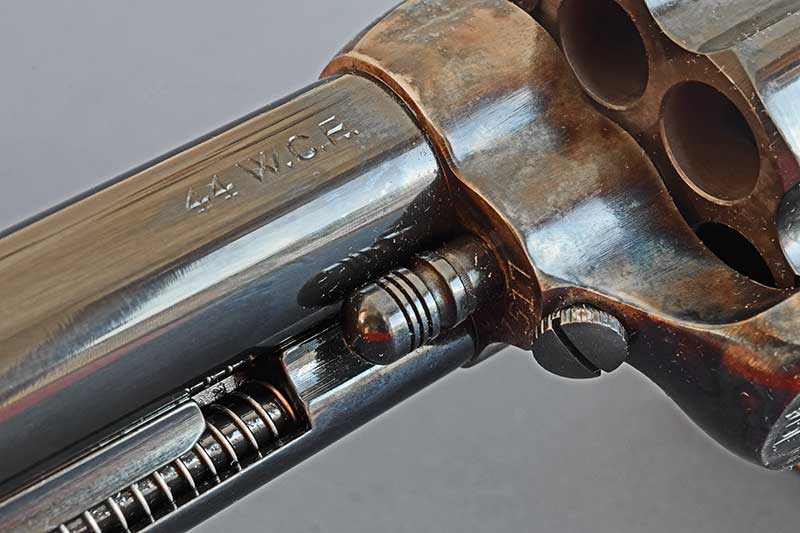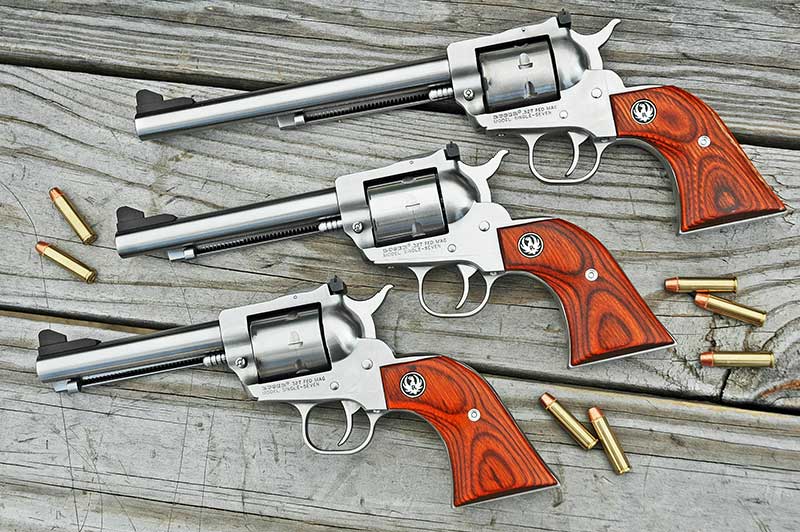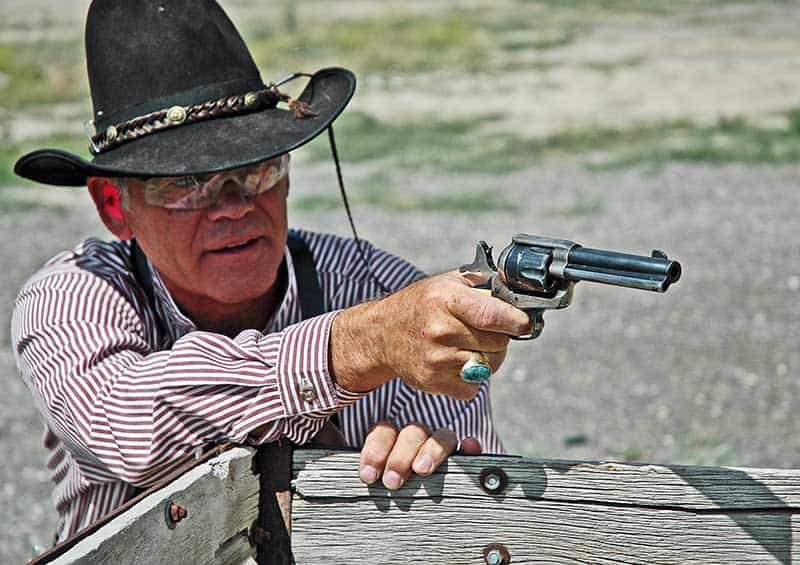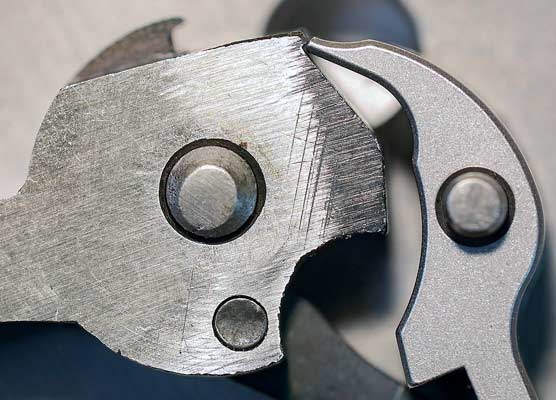Real Vs. Repro
While storied names command frightful premiums,
authenticity doesn’t have to!
It sold initially for $17.50. Today, with limited wear, an early Colt Single Action Army might fetch $90,000. These prices (debut retail and a current Blue Book of Gun Values estimate) should catch the eye of any investor.
n 1873 a Double Eagle gold piece contained 0.9675 oz. of gold. At most hardware stores the coin would have bought a new SAA, plus a holster and a box of cartridges. Now, at $1,300 an ounce, gold has appreciated far less than the revolver. Even a current single-action Colt — fresh from the Custom Shop with no history to add value — commands $1,800. Round figures. You get the idea.
So, if you found an early Peacemaker in an old house, as did one fellow in 1925, you’d surely pay the $4 he gave the widow of the late Army officer who had owned it. Though it had likely never strayed far from that New Hampshire farm, and thus lacked any link to frontier bloodshed, this revolver fetched $242,000 at a Christie’s auction in 1987. Which is why, after parting with a much-later SAA, I still see a therapist.
Even Colts a decade into smokeless production come dear these days. An SAA built shortly after 1896, when the vertical screw locking the cylinder pin gave way to a horizontal lock, can fetch $11,000, says Blue Book. No matter the scuffed blue and scarred stocks dragging the condition down to 80%. Some Cowboy Action shooters might fire such a gem. Others would find the cost of authenticity too high — especially if the homestead begged a new furnace or a heedless bovine had wrinkled the family buggy at Dead Cow Curve.
A Modern Take
Though the SAA’s profile, balance and operation predated metallic cartridges, handgunners kept Colt’s Hartford plant humming into the 1920s. But by the onset of World War II, demand had fallen victim to double actions and autoloading pistols. In 1919, Stoeger’s Shooter’s Bible listed SAA’s at $38.50. Colt wouldn’t resume production until 1956, when it bumped the price to $125. Other manufacturers showed no interest in reviving the type — save William Batterman Ruger. “I had always loved the old single-action Colt. I can remember yearning for one when I was just 14 [and] living in New York City. …”
Ruger’s Single-Six appeared in 1953. Orders for the .22 flooded in. A centerfire version in .357 Magnum came two years later. “Rebirth of the single action,” proclaimed Shooter’s Bible. Ruger’s refinements included “best quality music wire springs throughout, no leaf springs,” a “micro adjustable rear sight and a Baughman Ramp front sight.” Retailing for $87.50, this revolver, the Blackhawk, had a “chisel pointed alloy steel firing pin mounted in the frame.”
The 1950s also ushered in the Great Western series of SAA lookalikes. They offered the same barrel lengths as the Colt. Also, “every part … in the Great Western Frontier is interchangeable with the original Single Action Army Revolver hammer and trigger and bolt screws, to improve ignition and to prevent the ‘shooting loose’ habit of these screws.” The Great Western featured a floating, frame-mounted firing pin. Proof loads generating pressures of 52,000 psi evidently produced no hint of frame failure in revolvers bored for the .357 Atomic — which, with Great Westerns in .44 Special, listed at $125. In .38 Special and .45 Colt, the price was $97.50.
These seem modest sums now; they would have stunned men who carried early Colts. Sam Bass and his gang got only $11 from one robbery. Another netted them a dozen peaches. March 1877, gang member Robert McKimie killed stage driver Johnny Slaughter during a holdup. The other outlaws voted McKimie out, but the damage was done. Were it not for Slaughter’s death, Bass and company might have lived well off a Nebraska train robbery. Besides an immediate $1,300, plus loot from wealthy passengers, the baggage car disgorged a mother lode of $60,000 in gold! A fortune in the day of $18 revolvers! Alas, the bandits flaunted their wealth, and the law took full advantage.
Italy Steps Up
Roughly a century after the SAA appeared, black powder enthusiast Mike Harvey and his wife Mary Lou opened a gun shop in Houston. Using a museum rifle as template, Mike built his own muzzleloader from scratch. Then he bought Allen Firearms. Cartridge rifles and revolvers followed percussion front-stuffers. To grow his business, Mike visited Brescia, in Italy’s “gun valley.” Impressed by Aldo Uberti’s understanding of “the art of the gun and how to capture it,” Mike engaged him to reproduce the 1873 Colt SAA in all details save proof marks — but using the best steels. Fit, finish and function had to match the original’s.
So began Cimarron Firearms. Over the past 30 years Cimarron has worked with Uberti and other quality-conscious manufacturers to introduce dozens of historically significant rifles and handguns. Most designs hark to the 1860s and 1970s, but you’ll find 1847 Walker and 1848 Baby Dragoon Colts, and the 1851 Navy favored by Wild Bill Hickok. You can also get the Richards-Mason conversions that adapted percussion revolvers to metallic cartridges, and true-to-life 1858 Remingtons. The Cavalry and Bisley versions of Colt’s 1873 come in a variety of finishes, even antique “original” and bright charcoal blue. Case-colored frames are standard; some models offer a stainless option. Cimarron also recreates the important Model No. 3 Schofield hinged-frame revolver. It comes in .44-40, .45 Colt and .38 Special. The faithfully reproduced Model No. 3 Russian is listed in .45 Colt and .44 Russian.
For shooters enamored of Hollywood’s renditions of the Old West, Cimarron has firearms faithful to famous films such as the Rooster Shooter, Wyatt Earp Buntline, Doc Holliday Thunderer and even The Wild Bunch 1911 from Sam Peckinpah’s 1969 western. In addition to Cimarron, other importers like Taylor’s & Company and Dixie Gun Works also offer reproductions from Italy.
National allegiance aside, how good are Italian reproductions? My Cimarrons include a 5 1/2″ Pre-War Frontier in .45 Colt, a 7 1/2″ Old Model P in .44-40 and a 4 5/8″ Model 1877 Lightning in .32-20. The .45 and .32-20 have the cross-button cylinder pin release; I specified the earlier screw lock for the .44-40. I hadn’t planned on buying so many, but each impressed me with its faithful detailing, the fit of its parts and its smooth action. Trigger pulls aren’t uniformly perfect, but I’m finicky about triggers, and there’s no other visible or palpable flaw. Given traditional fixed sights, I’m pleased this trio shoots close to point of aim with Black Hills Cowboy Action ammo: 250-gr. RN at 725 fps for the .45, 200-gr. RN at 800 fps for the .44-40 and 115-gr. FP at 800 fps for the .32-20. Comfortable loads, they shoot as tight as I can hold over bags. The .45 blessed me with a knot so snug it qualifies as outrageous good fortune.
None of these revolvers has malfunctioned. I did, however, lose the .32-20 to Alice, whose hands couldn’t be pried from that graceful bird’s-head grip: “It’s cute!” The report was mild; her bullets sailed true. I don’t have a three-gun belt anyway.
Home Of The Brave …
What about U.S. companies? While Colt Custom Shop SAA’s still turn heads, Ruger sixguns cost much less. Cosmetically appealing, they’re reliable, accurate and durable. In 1958, on the heels of the Single-Six and Blackhawk, Ruger fielded a petite Bearcat .22. The “Old Model” Super Blackhawk .44 Magnum followed within a year. From 1963 into mid-’64 Ruger produced the Hawkeye pistol in .256 Winchester. Its revolver profile belied a single-shot action. The total run of 3,075 Hawkeyes sold into the early 1970s.
In 1972 Ruger began making its Old Army black powder .45-caliber revolver. Unlike early Colts, it wore a top strap and adjustable sights. The same year Ruger also announced its New Model Single-Six and Blackhawk, with two-position hammer and transfer-bar ignition. Safe with six rounds! The New Model Super Blackhawk arrived in ’73. Eleven years later the company adapted its Single-Six rimfire to the .32 H&R Magnum: “the muzzle energy and velocity of which exceed those of the .38 Special….” The 2007 debut of Federal’s .327 Magnum would give the revolver even more zip. Single-Sixes took Bisley form in 1985. A New Model Super Blackhawk Hunter with scope-friendly rib appeared in ’92 — an updated follow-on to the original Peacemaker and a tribute to both Samuel Colt’s design and Bill Ruger’s vision.
In 1993 Ruger announced its Vaquero, true to the original Colt SAA in hand, but with the mechanical innovations Ruger had earned increasing market share for over four decades. In .44-40, .45 Colt and .44 Magnum, and at a price of $394, this fixed-sight sixgun was irresistible. I bought one.
The self-loading pistol, now with synthetic components, has a firm grip on L.E. and military sales. But the single-action Colt, a century and a half old, still seduces shooters who’ve never felt the handle of a plow. Call it a faultless marriage of form and function. Blame an intemperate fascination with the feral men whose bullets riddled the frontier. We still adore the SAA. Its domestic and offshore offspring aren’t “real Colts,” but they’re real good — and in some ways better! And you don’t need a tall stack of Double Eagles to buy one.
For more info:
Subscribe To American Handgunner

Get More Revolver Content Every Week!
Sign up for the Wheelgun Wednesday newsletter here:














